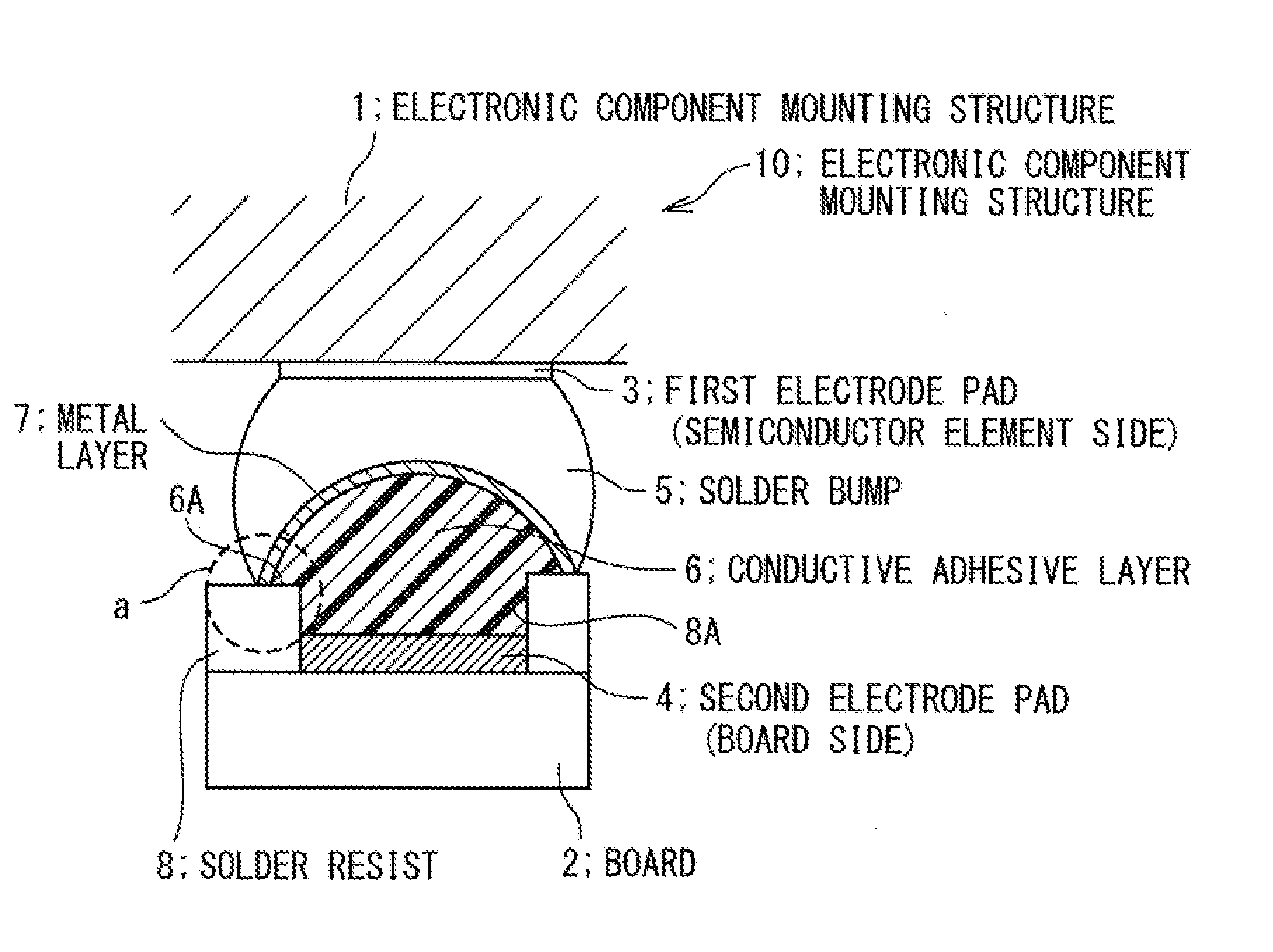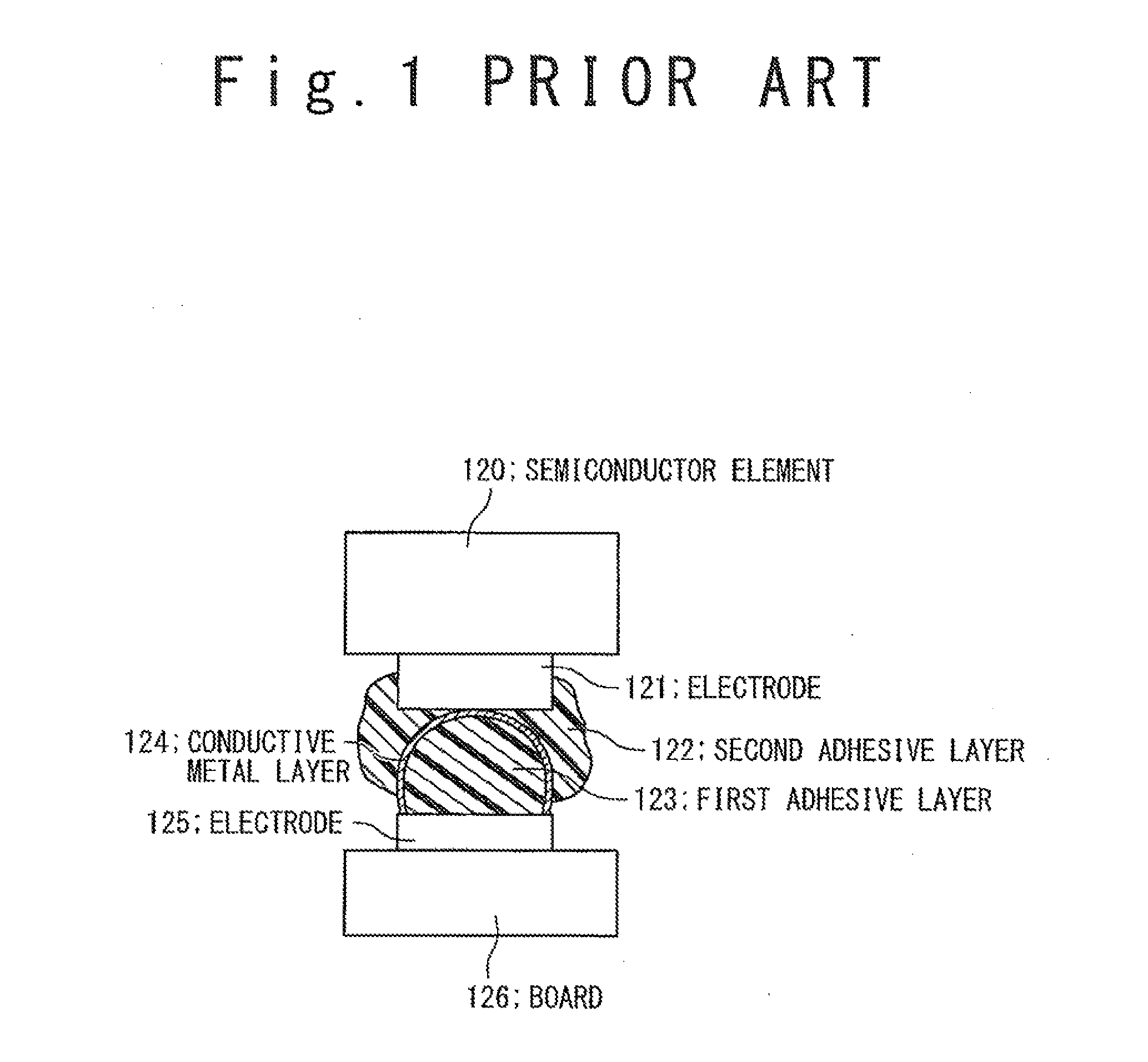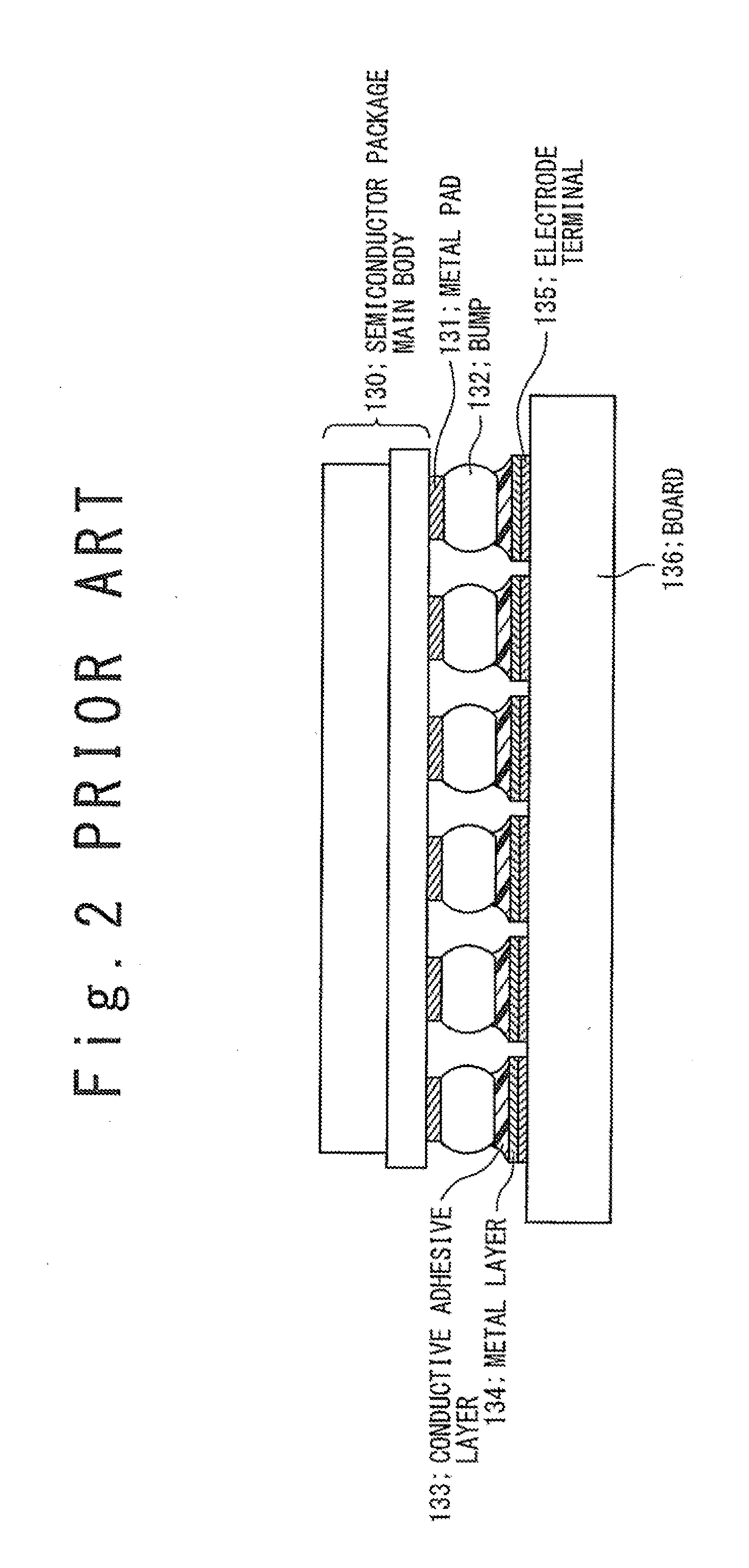Electronic component mounting structure, electronic component mounting method, and electronic component mounting board
a technology for electronic components and mounting structures, applied in the direction of printed circuits, sustainable manufacturing/processing, final product manufacturing, etc., can solve the problems of poor connection reliability, increased stress, and increased difficulty in ensuring connection reliability, so as to reduce the adhesion strength, suppress bad influences, and reduce the effect of stress reli
- Summary
- Abstract
- Description
- Claims
- Application Information
AI Technical Summary
Benefits of technology
Problems solved by technology
Method used
Image
Examples
Embodiment Construction
[0024]Referring to the accompanying drawings, an electronic component mounting structure according to the present invention will be described below. In an electronic component mounting structure 10 according to the present invention, a semiconductor element (electronic component) provided with electrode pads 3 and a board 2 provided with electrode pads 4 corresponding to the electrode pads 3 are arranged such that the electrode pads 3 and the electrode pads 4 are respectively opposed to each other. A solder bump 5 is formed on a surface of the electrode pad 3, and the electrode pad 3 and the electrode pad 4 are connected via a conductive adhesive layer 6 contacting the solder bump 5 and the electrode pad 4. Solder resist 8 having an opening 8A regulating an area of the electrode pad 4 is formed on a surface of the board 2, and the conductive adhesive layer 6 is formed to protrude from a surface of the solder resist 8. The conductive adhesive layer 6 has an elastic coefficient lower ...
PUM
 Login to View More
Login to View More Abstract
Description
Claims
Application Information
 Login to View More
Login to View More - R&D
- Intellectual Property
- Life Sciences
- Materials
- Tech Scout
- Unparalleled Data Quality
- Higher Quality Content
- 60% Fewer Hallucinations
Browse by: Latest US Patents, China's latest patents, Technical Efficacy Thesaurus, Application Domain, Technology Topic, Popular Technical Reports.
© 2025 PatSnap. All rights reserved.Legal|Privacy policy|Modern Slavery Act Transparency Statement|Sitemap|About US| Contact US: help@patsnap.com



